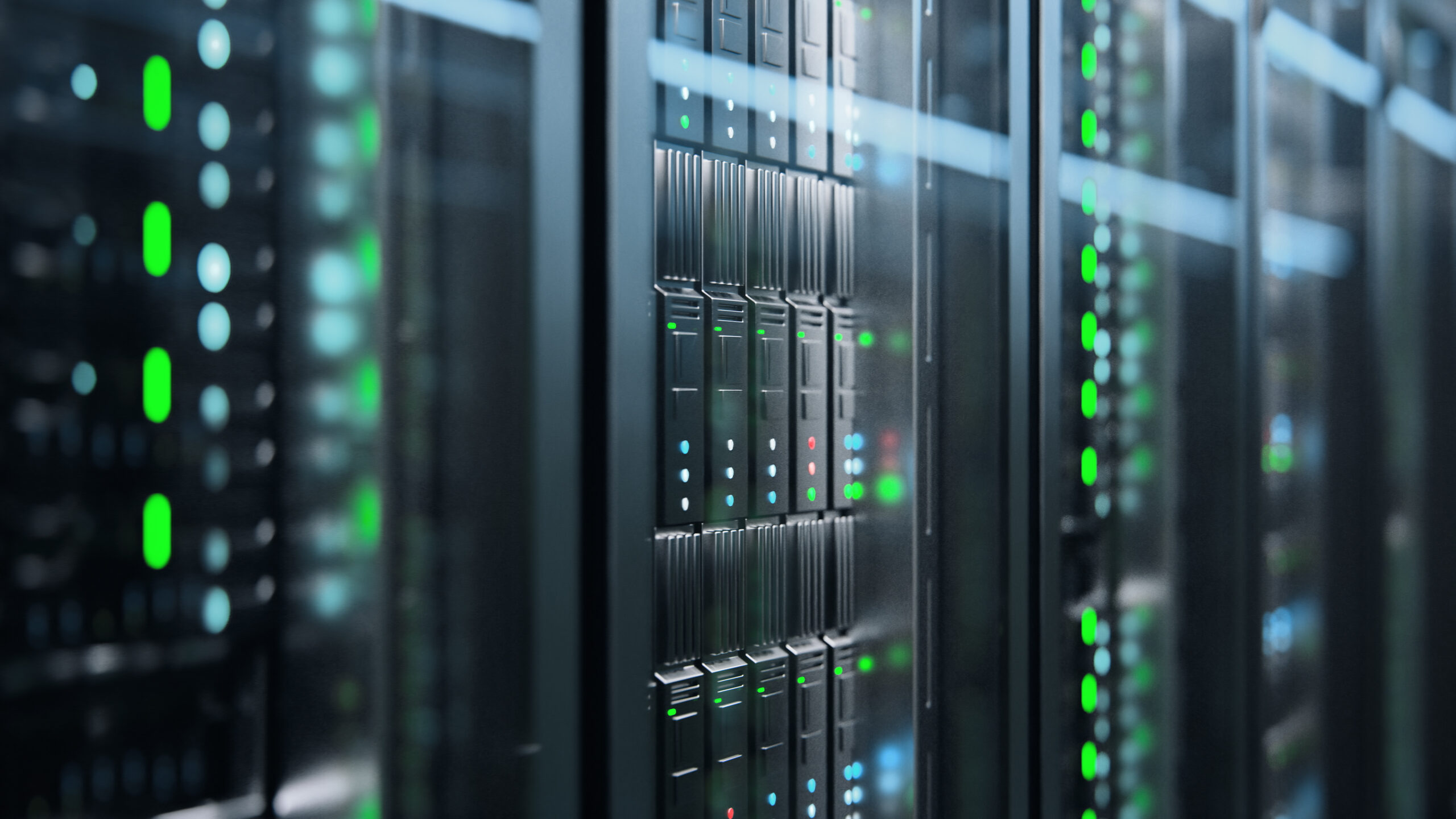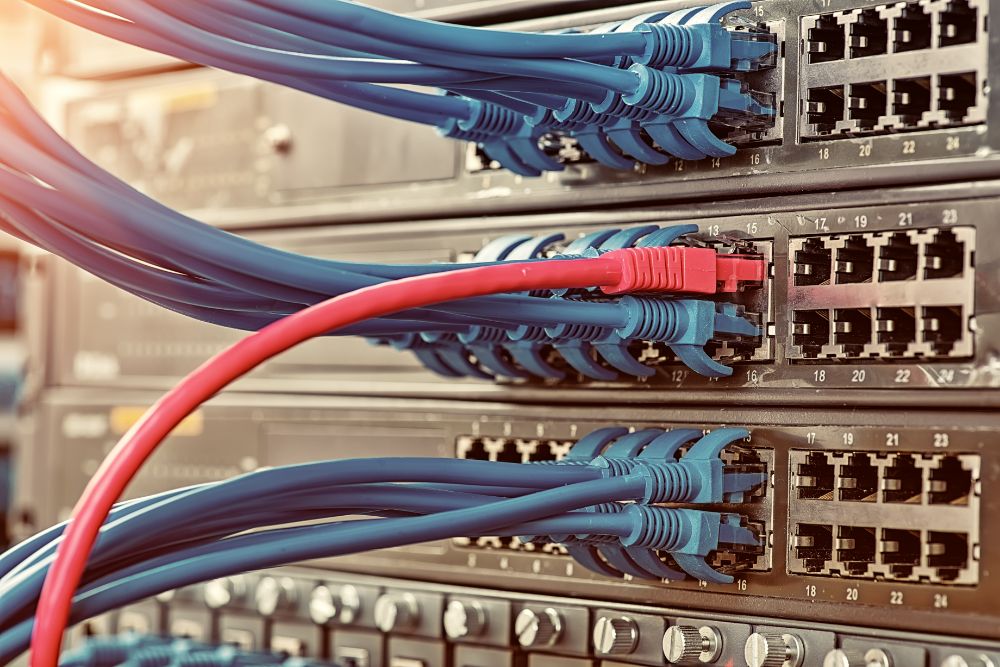Your network isn’t just important to you – it’s the lifeline of your business. That’s…

When is the right time to replace or upgrade a server?
We can’t understate the importance of a reliable server supporting your business. Without a high-functioning server, your business is susceptible to issues that can hinder its growth, such as sluggish performance and frequent hardware failures. If you’re noticing your server is less reliable, it’s time for a server upgrade before things worsen.
However, deciding when to proceed with a server upgrade can be tricky. You might wonder, “When is the right time to replace my server?” That’s exactly what we are here to help you figure out.
We’ll walk you through the signs that it is time to consider a server replacement and indicators that you should upgrade your server. Then, we’ll share how to assess which server is right for you and discuss the steps you should take before you begin your server upgrade process. Don’t panic—it’s not as complicated as it sounds!
Signs it’s time for a server replacement
Whether you know your server is a decade old or you’re beginning to suspect it based on performance, here are the telltale signs that signal it’s time to upgrade servers.
Sluggish Performance
Your first indicator that a server upgrade is necessary is slow performance. Your server is at the core of your business’s operations, so you must address any sluggishness at once.
Slow server performance can hinder productivity, impacting your bottom line. Ultimately, by not updating your server, you risk losing revenue.
Sluggish servers impact work processes in several ways. For starters, it’s tricky for your team to get anything done. Documents can take forever to load, which means a relatively simple process can take minutes longer than it should.
Not only will this cause frustration for your team, but it also means your company will be less productive. Additionally, if you use your server to run your website, there can be problems on the consumer end.
A sluggish server may lead consumers to trust your brand less, which means less money for you. Plus, your customer satisfaction will suffer.
Frequent Hardware Failures
Another way to tell that your server is ready to be replaced? By recurrent hardware failures. Anyone who has experienced a hardware failure knows how frustrating and costly the repairs can be.
Those repairs add up and can cause real financial strain for your organization. This is especially true if you need to call emergency repair services to help get your hardware up and running again.
Not only does this impact your business’s sense of continuity, which, again, impacts how consumers see your business and how reputable they think you are, but it also causes workflow disruptions for your team.
Hardware failures are preventable; with a server replacement, you’ll save frustration and funds wasted on repairs.
Indicators for server upgrades
So, how do you determine if you simply need a fresh server with the same capabilities or if it’s time to take the next step with a server upgrade? It can feel overwhelming to make this decision, but with these indicators, you’ll have an easier time deciding which is the right move for your organization.
Growing storage needs
The first indicator you should consider an upgrade instead of just a replacement is if your company needs more storage. There’s a ton of data globally—Deloitte predicts that, by 2025, our global data volume will amount to 175 zettabytes.
Data is growing, and your business needs a server to keep up with the changing times. Furthermore, by updating your server, you’ll enjoy improved data management and accessibility, all thanks to increased storage.
Increased Network Traffic
If your network is experiencing an increase in traffic, it’s essential to accommodate the rise in users and devices. Less capable servers can become overwhelmed, which leads to that sluggish performance we talked about before. And that means frustrated users.
When you complete a server upgrade, your network becomes more efficient. And a more efficient network infrastructure means happier employees and happier customers. That’s why investing in your server is worth it.
Software and Security Requirements
Software evolves quickly, and many security vulnerabilities are associated with using out-of-date software. Similarly, you’ll need to be cognizant of your server’s role in protecting your private data. When you have an outdated server, you’re vulnerable to security issues.
New servers offer new security updates and patches, which safeguard your data. Additionally, depending on if you are using a legacy system, you may not receive any server upgrades anymore because it is so outdated. This means your information is vulnerable to criminals and cyber threats wanting to steal your data.
Selecting the appropriate server solution
So, how do you tackle selecting the appropriate server solution for your brand? What about when it comes to new vs refurbished equipment? We have a few suggestions for things to consider when picking your server.
Your server impacts performance based on how it can handle traffic and scalability based on how it handles growing storage needs. This is why it’s a massive decision. Choose wisely!
You may be considering the same physical hardware you’ve used in the past but a newer version, or maybe you want to switch operating systems. Perhaps you’re unsure if you want to opt for a physical or cloud-based server.
Maybe you’re unsure if your server administrators are familiar with a system, or you want to use Server Core to streamline operations. Regardless of what you decide, here’s how we suggest you compare up to two versions of servers at once.
The best news is that there’s also the opportunity to use refurbished servers, which you can get for a fraction of the cost and work just as well as new equipment.
On-Premise vs Cloud-Based Server
Your first decision is whether you prefer an on-premise, physical server or want to work with a cloud-based server. There’s no wrong option; there are different reasons you’d pick each.
An on-premise server is a great option if you want your server on your organization’s premises (or in a data center, if you so choose) for security reasons. However, if you scale your business, you will have to purchase more physical servers, which is one potential downfall.
Additionally, when your server is serviced, typically, you’ll have to have repairs completed in person. The good news? Your costs are rather predictable, regardless of the usage.
On the contrary, a cloud server is virtual, and the services you receive are thanks to an external provider. You won’t have a physical server at your organization, and scaling it is usually simpler in this case, as you won’t need to purchase physical servers.
Typically, your cloud server can also be repaired virtually, and costs can vary since you can select a payment model that allows you to be more flexible. You’ll only pay for what you use.
To make your decision, consider your business’s budget, as well as whether you feel having an in-person server would have its benefits.
Windows vs Linux Server
Your next task is to determine whether you want to opt for a Windows or Linux server. Maybe you initially wanted to upgrade a Windows server but then heard great things about a Linux server. Or perhaps you’ve always worked with Linux but are curious about what Windows can do.
A Windows server typically has a higher cost associated with it, but it makes up for that in user-friendliness. Secondly, Windows servers are highly compatible with other Windows programs, so using those is also a good idea.
Keep in mind that the way your server performs is related to the Windows server version, so do your homework before you choose one. In some cases, you might also want to look into the Windows server setup media services use if you plan on using your server for content delivery.
On the contrary, Linux servers are typically more cost-effective because they are open-source, so there’s no cost associated. It has a reputation for great support for web-based applications but may not be as good of a fit if you use Windows. It also gets regular security updates, which makes it an appealing option.
Evaluating the Cost and Benefits
Finally, when considering which server you’ll select, think about the financial costs associated with it. As we mentioned, the on-premises server tends to have a fixed price, whereas a cloud server may be more flexible, varying depending on usage.
If you’re on a tight budget, you may find that a usage-based model such as a cloud server is a better fit. Or, if your budget is a bit larger, you can pick an on-premises option.
Preparing for a server upgrade
You’ve decided to follow through with a server upgrade—congratulations! We are willing to bet that you will find your upgraded server better supports your company’s best performance.
The upgrade process is easier when you follow the steps outlined below. By making sure you assess the server’s current capabilities, plan or downtime, and make a plan to back up the latest version of your data, you can rest assured your new server will enjoy a seamless, clean install.
Assessing Current Server Capabilities
First, you should assess how your current server is performing. What are its limitations? Does it not handle the influx of traffic your brand is having? Or is it simply outdated, and you’re worried about security complications?
There are several assessments available that allow you to gain further insight into how your server is performing. One of the most effective ways to do so is to use this list of questions provided by IBM and run through the list to see how your answers match.
Planning Server Downtime
Next up, you should prepare for server downtime. Unfortunately, it’s unrealistic to expect you won’t have any downtime when you’re updating your server. However, it’s a good idea to plan it out carefully.
Ensure the downtime won’t coincide with any important happenings, and your team knows when the outage occurs. Create a plan to work around it. Most importantly, ensure everyone is well aware of what’s happening so there aren’t any surprises.
Backing Up Existing Server Data
Before you switch your server, it’s essential that you backup your data. Of course, there’s always a slight risk that data will be lost. Backing it up mitigates that risk. We suggest you do a complete backup, which will document all your data completely.
There’s also the option to complete an incremental backup, so the files that have changed since your most recent backup will be updated. However, we don’t advise this since you’re making a big change. It’s best to have an exact, up-to-date copy.
Maximizing the benefits of a server upgrade
Ultimately, the most important thing to keep in mind is that you’ll have to replace and upgrade your server at some point, and doing so in a timely manner is essential. Keep an eye on your server infrastructure and make informed decisions about when to upgrade. By evaluating your current server setup, you’ll avoid surprises when you’re ready to take the next step.
How Network Craze Can Help
If you’re in the market for a new server, Network Craze can help you find one that suits your usage needs and stays within your price point. Reach out today to learn more about how our experts can help source the right network equipment for you.






Comments (0)